PAST PRESIDENTS OF BHSU

President Fayette L. Cook
1885-1918
In 1885, Fayette L. Cook began his tenure as President. Under Cook’s leadership, and oftentimes personal financial support, the one-building Normal School grew and prospered. After 33 years and many successes including a yearly enrollment of 303 students, three main campus buildings and a women’s dormitory, President Cook submitted his resignation in 1918.
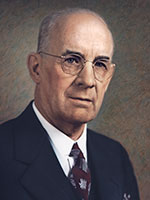
President Ethelburt C. Woodburn
1918-1942
Ethelburt C. Woodburn was chosen as the next president. During the Woodburn administration the Regents authorized the establishment of four-year courses leading to a bachelor of science degree in education. Enrollments continued upward, summer course offerings expanded, new faculty and staff members were hired, and campus athletics flourished.
Through the growth years of the 1920s, the financial difficulties of the 1930s, and the opening years of World War II, Woodburn guided the school forward. In 1942, the college earned accreditation by the American Association of Teachers Colleges. After 23 years as the school’s president, Woodburn retired.
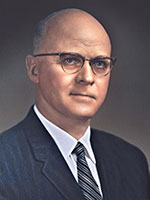
President Russell E. Jonas
1942-1967
In 1942, Dr. Russell E. Jonas became president. Born in Iowa and raised on a ranch in western South Dakota, his interest in education was nurtured in rural schools. Jonas embarked upon his new responsibilities with vision and purpose. The college was selected to train Air Corps Cadets and following the war, the college grew as the need for teachers and educational opportunities for veterans increased. BHSU achieved accreditation from the North Central Association, expanded its curriculum, began offering graduate courses, and initiated a long-range building program.
When Jonas retired as president in 1967, enrollment had reached 1,804. The campus had acquired a new classroom building, four new dormitories, a new student union, and gymnasium.
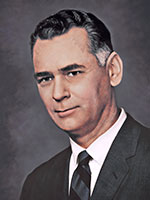
President Meredith N. Freeman
1967-1976
Dr. Meredith N. Freeman was selected to replace Jonas. Born, raised and educated in Missouri, Freeman was a man of conservative stature who was confronted with the changing social values of the 1960s. The strength of the Freeman presidency lay in his ability to govern and to find new direction for the college. Under Freeman’s direction the E.Y. Berry Library-Learning Center was built and the business division expanded its offerings. The college received word of accreditation by the North Central Association and the National Council for Accreditation of Teacher Education. Freeman announced his resignation in the spring of 1976.

President Maurice R. Fitzgerald
1976-1977
The Board of Regents appointed Dr. Maurice R. Fitzgerald, Vice President for Academic Affairs, as acting president until a replacement could be found. Fitzgerald, a BHSC alumnus and outstanding athlete, was popular with the faculty and staff. His tenure as acting president was unduly extended as statewide plans for a single university system were considered. Following his untimely death in 1977, Fitzgerald was posthumously named president of the college by the Regents.
Although Fitzgerald’s leadership term was limited, several major construction projects were completed under his direction including a new physical plant addition, much needed additional parking spaces and the addition of a softball complex. Fitzgerald’s life centered around education and athletics.
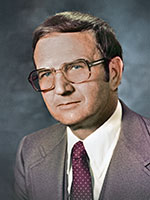
President J. Gilbert Hause
1977-1985
Dr. J. Gilbert Hause was named the sixth president of BHSC in 1977. Hause came to BH with a vast amount of experience in the areas of administration, teaching, and public relations. Hause truly believed in BHSU and its mission. He encouraged the faculty, staff and students to spread the word about the school’s programs and potential. Announcing his resignation in 1985, Hause was credited with increasing enrollments, reaccreditation and establishing an excellent faculty, staff, and student body as his legacy. During his leadership, BH emerged as the comprehensive higher education institution for western South Dakota.
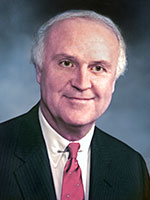
President Clifford M. Trump
1985-1994
Dr. Clifford M. Trump was chosen to become the seventh president in 1985.
The most salient points of Trump’s legacy as president included completion of the Donald E. Young Sports and Fitness Center, construction of a University apartment complex, gaining University status, steering the University through tough accreditation standards and overseeing record-breaking enrollment growth. Trump resigned in 1994.

President Tom Flickema
1994-2006
Dr. Thomas O. Flickema was chosen as the eighth president in 1994. Flickema always maintained that the cornerstone of academic achievement rested upon the strength of the faculty and the diversity of the curriculum. Under Flickema’s watch, outside funding for the university grew exponentially. Perhaps the most noticeable change spearheaded by Flickema was the transformation of the campus with ongoing landscaping and the addition of Clare and Josef Meier Hall. Flickema’s vision for BHSU included expanding the reach of the university by increasing the number and types of courses offered in the surrounding area. He led the University through a successful national accreditation visit from the Higher Learning Commission. He retired in 2006.
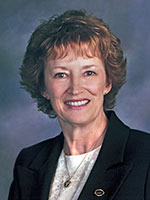
President Kay Schallenkamp
2006-2014
Dr. Kay Schallenkamp began her tenure as president at BH in 2006. Under Schallenkamp’s leadership, BH emerged with record breaking enrollment, added several new degree programs, and substantially increased grant funding and scholarship donations. During her tenure, BH completed a major renovation and addition to the Student Union and constructed a new Life Sciences Laboratory, the Alumni/Foundation Center and began construction on Crow Peak Residence Hall.
With Schallenkamp’s guidance, BHSU greatly expanded its role with the University Center–Rapid City. Schallenkamp also strengthened collaborations with businesses, industry, and government agencies.

President Dr. Tom Jackson, Jr.
2014-2019
Dr. Tom Jackson, Jr., became the university’s 10th president in 2014. Under his leadership, BHSU had record-setting levels of giving for scholarships, saw a tremendous increase in the number of student organizations, fostered incredible relationships with Native communities and Tribal colleges, strengthened support of veterans, grew global initiatives for faculty and students, and improved campus beautification. Jackson recognized the importance of undergraduate research and supported additional opportunities for students to work with faculty mentors on campus and in association with the Sanford Lab and the BHSU Underground Campus. Jackson was instrumental in creating stronger partnerships with local colleges and universities and oversaw the successful completion of three major accreditations (HLC-University, AACSB-Business and CAEP-Education). Jackson encouraged sustainability initiatives on campus which became a part of the campus culture and led to BHSU being recognized among the national leaders addressing sustainable practices.
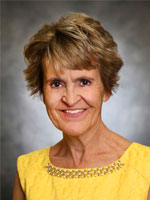
President Dr. Laurie S. Nichols
2019-2023
Dr. Laurie S. Nichols served as President of BHSU from 2019-23. During her tenure, Nichols prioritized a strong leadership team who valued ambitious goals. Their goals aided in the creation of a comprehensive strategic plan for the university and a more specific plan for enrollment, 10-year Higher Learning Commission accreditation, record fundraising, and nationally competitive athletics.
Nichols was instrumental in the creation of West River Health Science Center in Rapid City and helped solidify partnerships with Ellsworth Air Force Base to bring degree programs to active military and their families. She also strengthened the academic relationship with Crazy Horse and American Indian University of North America.
